Are You a Workhorse or a Show Pony?
The National Velvet and Black Beauty of newsletters trots out an interview with novelist Caroline Palmer. Plus: an iffy heiress, a breast-cancer breakthrough, and the Spreadiest movie of the year.
Welcome to Spreadlandia, where two veteran editors read it ALL to winnow out only the best: juicy yarns, big ideas, deeply personal essays, and hot goss—aka, the full Spread. Plus: original interviews, podcasts, and more. Come hungry!
Hellooooo, Thoroughspreads!
We’ve got a burning question for you: Are you a Workhorse or a Showhorse? It’s one you’ll be hearing with increasing frequency now that Caroline Palmer’s magazine-world novel, Workhorse, has dropped—and, if you’ve gathered here with us in Spreadlandia (vs. the glossier shores of the influencer set) we have reason to believe you are our spiritual sisters on the side of the hardworking nags. (How many horsey references can we fit in one 300-word intro? Just you wait and see!) Palmer’s 560-page doorstopper follows Clodagh “Clo” Harmon, a morally ambiguous striver in the magazine biz’s last days of disco, who is not the “right” kind of girl—i.e., she’s from the wrong side of the tracks, which in this world is the upper-middle-class ’burbs—to be fast-tracked up the ranks of a publication referred to only as “the magazine.” We all know there is only one magazine this could be. The book is poised for blockbuster status: Film rights are long sold to a very fancy bidder (more on that below), and a week before the book came out, it was already dominating an entire window display of Barnes & Noble’s Union Square location, to a degree we’ve only previously witnessed in The Help.1 The book also hits one of your Spreaditors right in the adrenal gland: Maggie and Caroline started out in magazines together—yoked to the same plow, you might say—at Vogue during the very era Workhorse takes place in. So its keen and 1,000% accurate observations about social hierarchy, warped body image, borderline alcohol abuse, overpriced footwear, withering self-deprecation, burgeoning beauty closets, VIP-only sample sales, regrettable sexual miscalculations, liberal abuses of expense accounts, and smoking—so much smoking—bring us a surge of nostalgia, plus enough PTSD to require an extra shot of Prilosec. As Alex Beggs put it in the New York Times review, “Palmer’s one-liners cut like a Tiffany letter opener.” And that’s the best part: Maggie has been treated to Caroline Palmer’s hilarious quips and Dorothy Parker-esque bon mots for more than two decades. Now you can get in on the goods, too.
Put some flowers in our manes, will you please—god knows we’ve worked hard enough for them—and click that ❤️ button?
Neigh!
Rachel & Maggie
P.S. Special thanks to Sprintern Miranda Wollen who contributed even more than usual to this week’s newsletter!
Keep reading for our interview with Caroline! And stay tuned on Friday for the release of our first Print Is Dead (Long Live Print!) interview in eons. But first, the news!
The Heiress and the Children
After Vanity Fair published a humiliating story on Johnson & Johnson heiress Elizabeth “Libet” Johnson and her romance with Frédéric Fekkai in 2001, Johnson decided to switch gears from party girl to do-gooder, starting an orphanage in Cambodia called Sovann Komar that she poured $20 million into over the 14 years until she died. (The power of magazines back then, eh!) Now, eight years after Johnson’s death, WSJ has run a queasy-making exposé about what really went on with the wards of the charity, despite Johnson’s seemingly good intentions. It’s an icky cautionary tale that starts off kooky (Johnson assigned each of the children at the orphanage a Western name that matched those in her family tree) and gets worse from there. True-crime types will eat it up; those lacking an iron stomach should skip.
Read “An American Heiress Just Wanted to Help Children. Things Didn’t Go as Planned.” here or via AppleNews here.
Risk Management
The new Elle delivers a useful explainer on Clairity Breast, an AI tool using mammogram data to calibrate one’s true breast cancer risk. With breast cancer rates in younger women on the rise, Clairity could help us transition from the aged-based screenings we’re used to, and detect more cases earlier. How? It can detect cancer even in dense breast tissue, which younger women are the most likely to have and which hinder mammogram imaging.
Read it here.

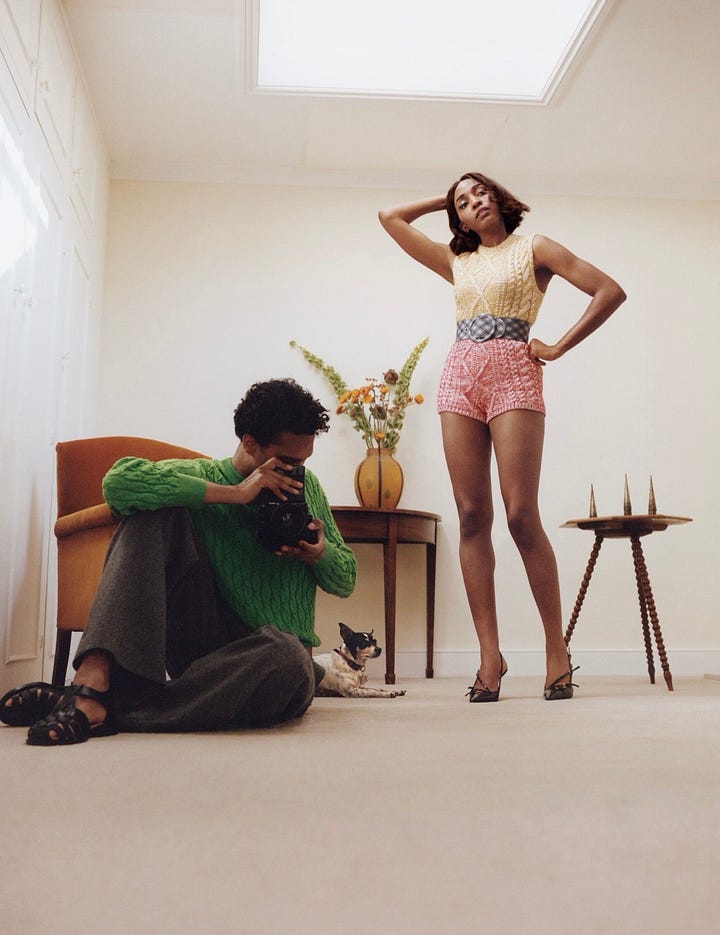
Is it normal that when we first saw Ayo Edebiri’s stunning Vogue cover, we felt just a liiiiittle proud? You know, given that we were there in the kitchen with Syd from the get-go. No? Not normal? OK, then! Well—clears throat—congrats to Edebiri on the milestone, shot by her friend Tyler Mitchell, who also appears in the story in a green-sweatered supporting role. Edebiri costars in After the Hunt, Luca Guadagnino’s meditation on cancel culture, which is out on Friday. Ms. Edebiri, we’d relish the opportunity to shake your hand one day.
Read “How Ayo Edebiri Became the Adult in the Room” here.
Throw out your pussy hats and laugh a little! (Ha… ha?)
There is perhaps no better harbinger of the sociopolitical climate than what goes on in the hallway between homeroom and lunch—where, if we take real-life high schooler Naomi Beinart’s word for it, the social value of wokeness has nosedived. The “new chill girl,” Beinart notes, is more tradwife than ballbuster. She lets the boys make their bigoted jokes, more out of fear of retaliation than ideological shift. Maybe she’s even watching Kill Tony and pretending to giggle girlishly at its rape jokes. In the Baffler, Adam Wilson dissects the meteoric rise of the brash, anti-woke standup comedy show, whose “sophomoric sensibility” undoes “hard-won shifts in cultural norms” and makes him feel like he’s “back in [his] high-school auditorium.” It’s starting to seem like we all need detention.
Read “As boys shift to the right, we are seeing the rise of the ‘new chill girl’” here, and “Who’s Laughing Now” here.
Is Tyra Banks behind this?
Because they’re putting Miu Miu models in floral aprons. If high school boys weren’t enough, now the fashion industry is down on women, too. Seriously: They’re putting rictus grin-mouthgards on models at Margiela and binding Alex Consani’s arms at Alaïa. Times fashion critic Vanessa Friedman writes about how much of Paris Fashion Week felt bondage-inspired—and not, like, in a cool, sexy way. And that’s not even the worst of it: Spreadfave Stella Bugbee points out in this week’s Blackbird Spyplane that, across the board, the “upsurge in feminism” she’s seen in past Fashion Weeks “felt truly and totally dead this season.” Tell us how you really feel, Stella!
Read “Why Can’t Fashion See What It Does to Women?” here, and “Hostile architecture” here.
Knox-knox…
Who’s there? Amanda, and she’s got another memoir. In the wake of Hulu’s extremely meh The Twisted Tale of Amanda Knox, the woman herself is going faccia a faccia with Giuliano Mignini, the prosecutor who put her behind bars. She also covers marrying her sweetheart in an interactive Dr. Who-themed wedding and reveals a family plot to smuggle her via boat to Canada. In her London Review of Books review, Jessica Olin writes about the cultural reckoning surrounding Knox, the inevitable creepiness of her celebrity, and our fixation with other people’s pain.
Read “In the Multiverse” here.
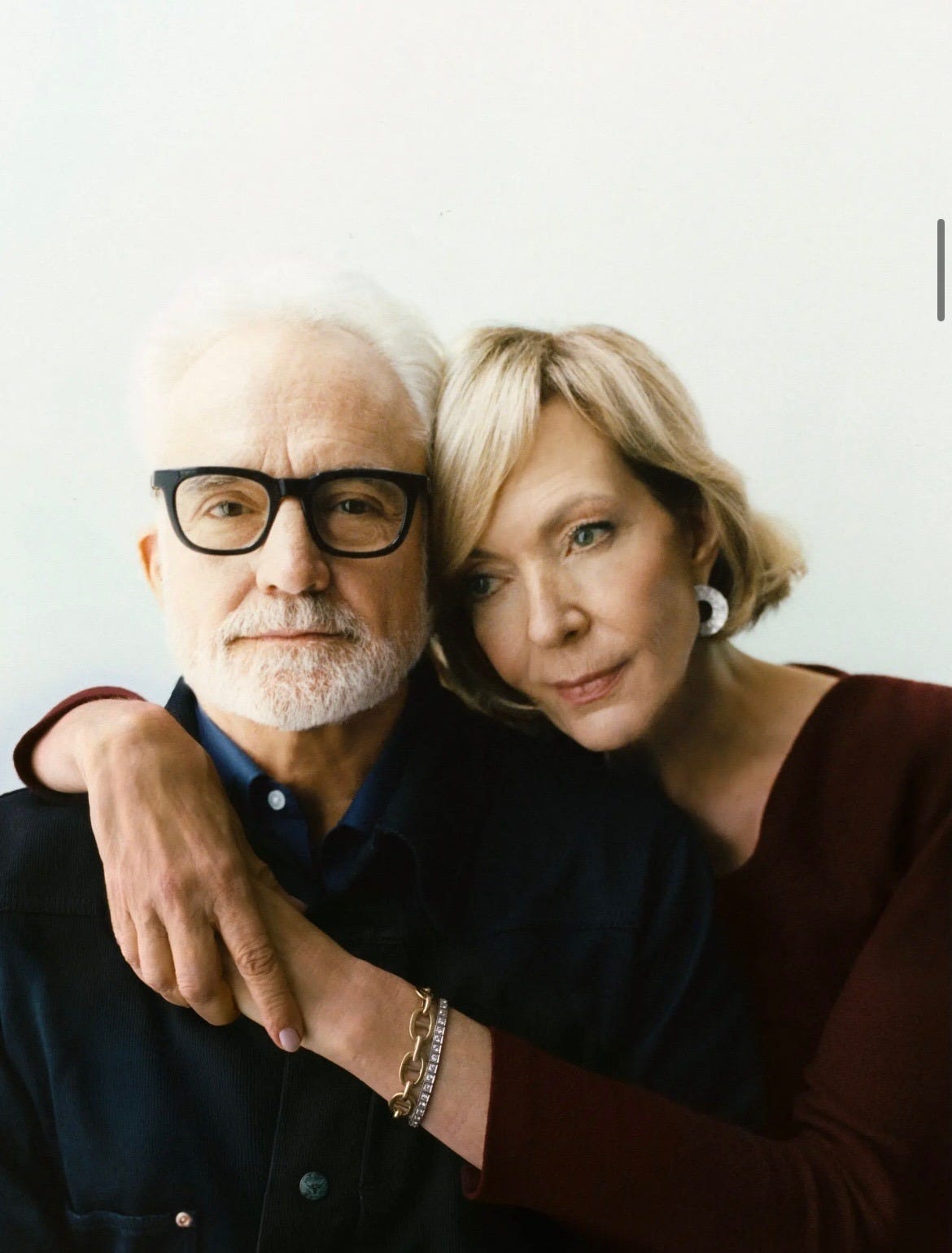
Rage Against the Machine
Betty Gilpin is pissed, you guys. In a hilarious letter penned in The Hollywood Reporter this week, the queen of GLOW rips Tilly Norwood—the AI “actress” who’s got Hollywood’s panties in a twist—a digital new one. Gilpin, a Real Human Actress, points out that Norwood is nothing but “property without zits or opinions” with “an encyclopedic brain tampon” and a morally corrupt creator. Norwood may not have a corporeal body, but believe us when we say Gilpin just turnbuckle face-mashed her in the virtual ring.
Read “Dear Tilly Norwood: Some Blunt Advice, Actress to ‘Actress,’ from Betty Gilpin” here.
Spice Up Your…Laundry Folding and Other Household Admin!
Posh and Becks are the world’s most glamorous pair of strivers, a distinction that has compelled each of them to participate in lucrative Netflix docuseries about their lives. In both cases, the Beckham in question plays both subject and producer (they’re also the world’s most glamorous marketing duo). While 2023’s Fisher Stevens-directed Beckham surprised critics by tackling more than the shiny stuff, reviews on the new Victoria Beckham are mixed, perhaps because to some people World Cup footage is more grabby than fashion show B-roll. Read the reviews in Slate, Harper’s Bazaar, Vogue, and Variety, or just join us in binging the entire thing while we crank through various tasks this weekend.
The Bullock Bulletin
Rachel here. Did y’all know Maggie’s book, The Kingdom of Prep, tops the reading list of Tyler, the Creator? Neither did we! Now, thanks to an all-around great profile of the music multi-hyphenate in T, the secret is out. TyCre (not a thing) tells writer Adam Bradley that he’s long frequented the library, where he discovered MB’s book and vibed with the preppy look and the J.Crew lore. In other Maggietastic news, she’s got a fresh story for Harper’s Bazaar that documents the latest frontier in our parasocial relationships: buying and wearing our idols’ actual clothes. (Shout out to Substackers and dedicated closet cleaner-outers
and .) RB out!Read “What’s in Tyler, the Creator’s Head?” here.
Read “We Now Live in a World Where It’s Normal to Shop Your Favorite Celebrity’s Closet. How Did We Get Here?” here.
OK, so the verdict is in on the Spreadiest movie of the year…
As Rose Byrne’s If I Had Legs I’d Kick You hits (some) theaters, two of our favorite writers, Amanda Hess and Michael Schulman, treat us to profiles of the Australian actress. Their stories even have pretty much the same lead. But if this was a derby—which it’s not!—it would be Hess’s to lose. (Love you, Michael!) Hess, who writes sharply and beautifully about having a baby with a rare genetic mutation in her book Second Life (highly recommend in print and on audio, which Hess reads), frames Byrne’s role as an avatar for maternal sacrifice—something she’s obviously thought a lot about. Unlike in Nightbitch and Tully and the Bad Moms movies, in which “even as they peek into the realms of postpartum depression, anxiety and psychosis, their rote images and jokes suggest that mothers can’t even have an interesting time when they hire a sitter and go to the movies…” she writes, “…Legs does not conspire in her containment. Her husband (Christian Slater) is a cruise captain who is literally out to sea; her daughter (Delaney Quinn) is heard and not seen. This allows the film to keep such an unflinching perspective on Linda that even as she unravels, her every move feels perfectly rational.”
Read “Rose Byrne as Mother of the Year” by Hess in the New York Times here.
Read “Rose Byrne Hits the Mother Lode” by Schulman in the New Yorker here.
Gotta Lean Out to Lean In
The second-biggest book of the week—what, we told you we were partial to Caroline Palmer at the top of this newsletter!—is All the Cool Girls Get Fired from former WSJ EIC Kristina O’Neill and former InStyle EIC Laura Brown. In case our endorsement isn’t enough for you, well, here’s Oprah.
Buy the book here.
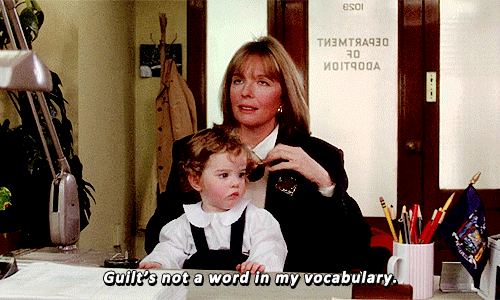
And finally: We’re picking our horse and riding it. Yes, this is where we trot out Workhorse author Caroline Paaaaaalmerrrrr!
The Spread: Since you worked at Vogue, first as a features assistant and later as the editor of Vogue.com for six years—and because the woman on the book’s cover doesn’t not look like you—a lot of people are going to perceive this as a thinly veiled memoir.
Caroline Palmer: I know! But it’s really not. The milieu is obviously very familiar, but the plot is completely foreign to me and the characters are made up. People want to know, like, “Who is [the older publisher dude] Mark? Is that [former Conde Nast honcho] James Truman?” I’m like, I forgot about James Truman! It never crossed my mind. [That character] is more like a bunch of characteristics of every handsome, smarmy guy in business.
For readers who don’t know, what is a Workhorse versus a Showhorse?
We’re talking about the difference between the 1 percent and the 0.25 percent. In the book I call it something like, “a mere distinction, like a few clicks of the dial.” Everybody we worked with at Vogue went to college, knows how to ski and play tennis. Yet there is such an insane delta in that 1 percent. To think that I could have felt disadvantaged [when I was there] is ludicrous, but in that bell jar, I certainly was like, “I am fighting an unfair fight.” I found it fascinating that we were able to forget that outside of this world, we were of extreme privilege.
You zero in on so many little details that illustrate the class differences between Clo and her obsession and frenemy, the very Showhorsey, blond nepo-baby Davis Lawrence.
My favorite example is the green Clinique square pressed powder compact. That was my makeup—matte ivory, wrong shade, too light for my skin tone. That Clinique compact was recognizable to me as mid-tier. It wasn’t CoverGirl, it was nicer.
Right, but Davis Lawrence would never. In magazineland you rub up against people of a certain ilk—not only very rich and connected, but also very beautiful, very well dressed, very smart. And there’s nothing wrong with them. They’re often very nice!
And they’ve already met the love of their lives, and they have a jet—suck it. It’s just too much.
What got you started on this idea?
At first it was more of a character study. During the pandemic, I watched a bunch of stuff I had missed—Homeland, The Queen’s Gambit, this episode of Nurse Jackie. I saw that Nicole KidmanHugh Grant show, The Undoing, where she wore that green suede coat. She was such a weird character, so perfect. Even when she found out her husband was cheating on her, instead of throwing a lamp, she was just very controlled.
The day after watching that I started writing. Every time we make a woman bad or evil, she’s either the straight-up villain with no context or we give her a really good reason. Like Claire Danes in Homeland could only want to go to work and leave her infant because she’s off her meds. Otherwise we can’t like her. Nurse Jackie was harsh, and they’re like, “Oh, it’s because she has a pill problem.”
Then I saw 13 Going on 30. I was like, what’s up with the Judy Greer character? She’s going to go through her friend’s stuff and steal her ideas and phone her boss and dime her out—but why? We didn’t need context. She was the villain to Jennifer Garner’s goodness. I was like, I want to find out what’s up with Judy Greer. With men, ambition is enough to kill someone or rob a bank—we’re never like, “I don’t buy it.” It’s generally why they do everything. They’re not doing it for love—they want to be the king or the boss or the head of the cartel. They can murder people and be dicks. But I’ve never seen a woman for whom just that is her reason, if she’s the hero.
Clo isn’t a villain but she does some pretty villainous stuff.
One thing that struck me as a person in magazines, especially when I was leaving Vogue, was how small my world had become. Within 10 minutes of walking out of that building, I was like, “Why was that literally a life or death circumstance?” Clo is someone who gets lost in that world. Losing is catastrophic to her, because she doesn’t realize there’s another path, another world. That’s an insularity I know I felt at a certain point. The panic—you’d walk by a conference room and two people would be talking and you’d be like, “They’re talking about me.” It’s so dumb, but it’s so real when it’s happening.
Talk about your decision to call it “the magazine” and not to center a big, imposing editor-in-chief.
The Devil Wears Prada, 2.0? It’s been done, but even if it hadn’t, when the story was coming together for me, the conflict was between peers—between people who are all trying to accomplish something at the same time, not fighting against their superior.
We cannot wait to see this on a screen—big, small, whatever, we’ll take it.
It’s been optioned by Heyday, which is David Heyman’s production company. They’ve done Harry Potter and Wonka and Barbie. They do less output, but they do it at a higher level. I sold the film rights the same week I sold the novel, which is a bit rare. I’m going to LA in a couple weeks and I’ll get to read the pilot. But I feel like lots of things get optioned, and you never know if it will happen.
You somehow wrote a 560-page book in just a few years while raising three kids. How?
This sounds like a lie but there was a very long period—like a year—in which I would go to bed at night giggling, because I was so excited to get up the next morning and write. I was so full of anticipation, it was kind of delightful and surprising.
Please tell Spread readers about your weird writing ritual.
I’d wake up at 4:15. Go downstairs, put on a pot of coffee, and watch TV news while I was bleary, with my glasses on. Every morning I wore this floor-length fake leopard coat. I looked like one of the Beale sisters.2 I’d start writing at 4:45. I always need background noise, so I’d leave the TV on low in the other room. Then—this is the corniest part. Dolly Parton is a very early riser and does this prayer/meditation thing that I bastardized. I would sit for five minutes and quickly go through things I felt grateful for, and then I had this saying: “Let today uplift me and let it remind me that my only job is to uplift others.” It put me in this very generous frame of mind and made it less of a slog and more of a privilege that I was alive and awake at 4:45 and able to do this. I’d write till 7:45, when my kids get up. Then it’s pack three lunches, where are your Crocs, do you need your saxophone today—all that. After that interaction with the world, I really couldn’t go back to writing. I was done.
Catch Caroline on her book tour in Montclair, New York, Los Angeles, Charleston here.
Buy your copy of Workhorse here.
Did someone forward you this email? To get the full Spread with all the fixins every week, click here to get that 25% off anniversary-rate paid subscription.

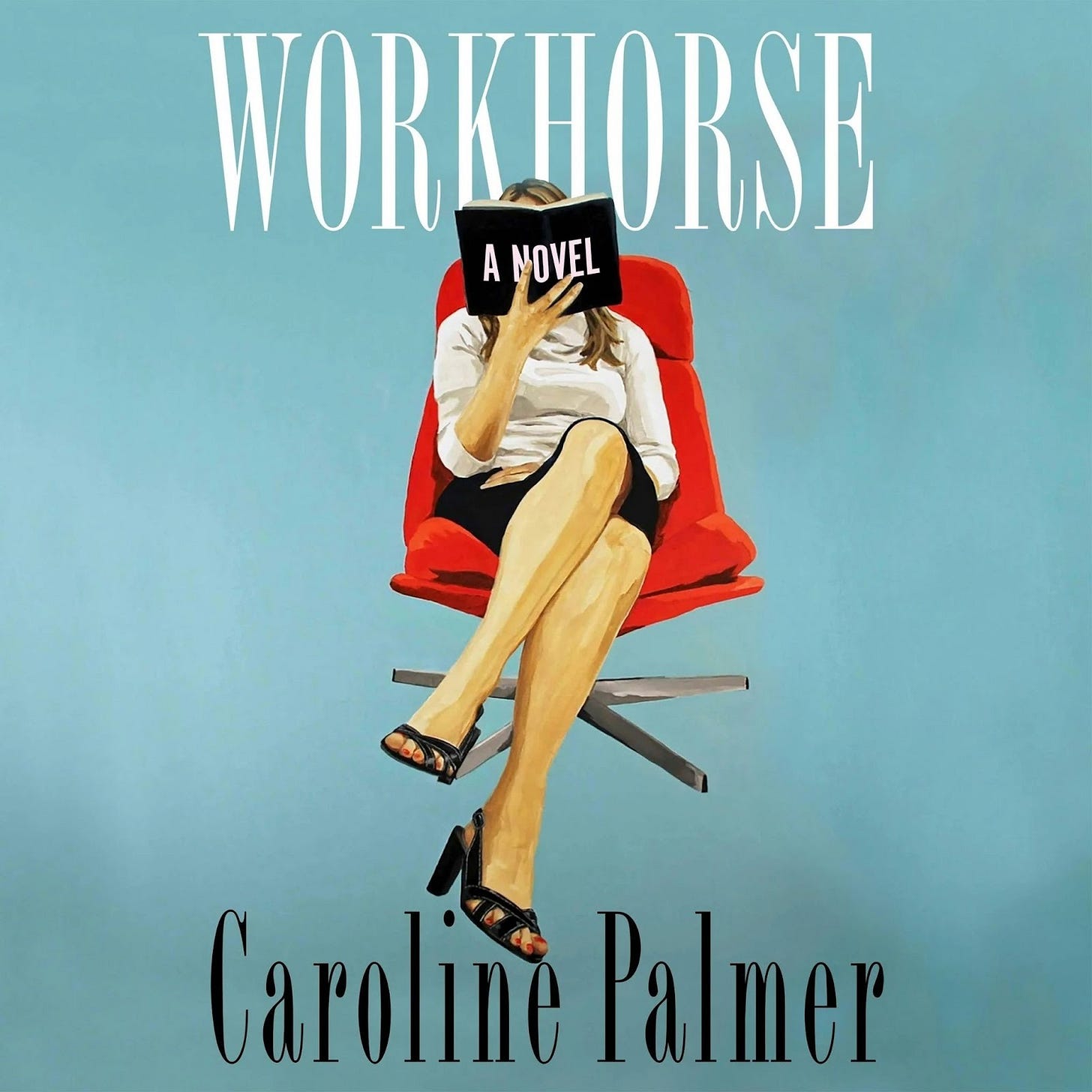
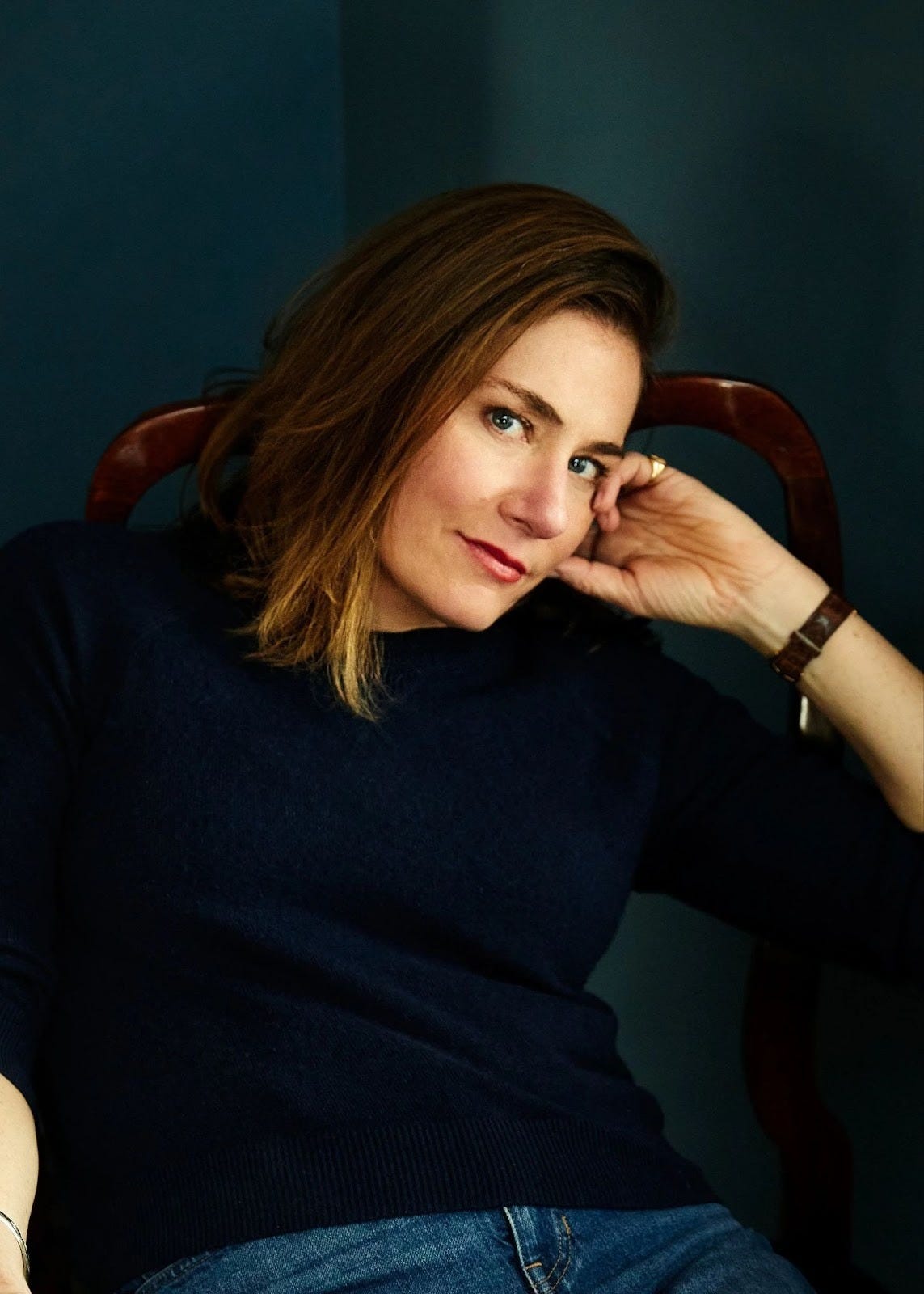
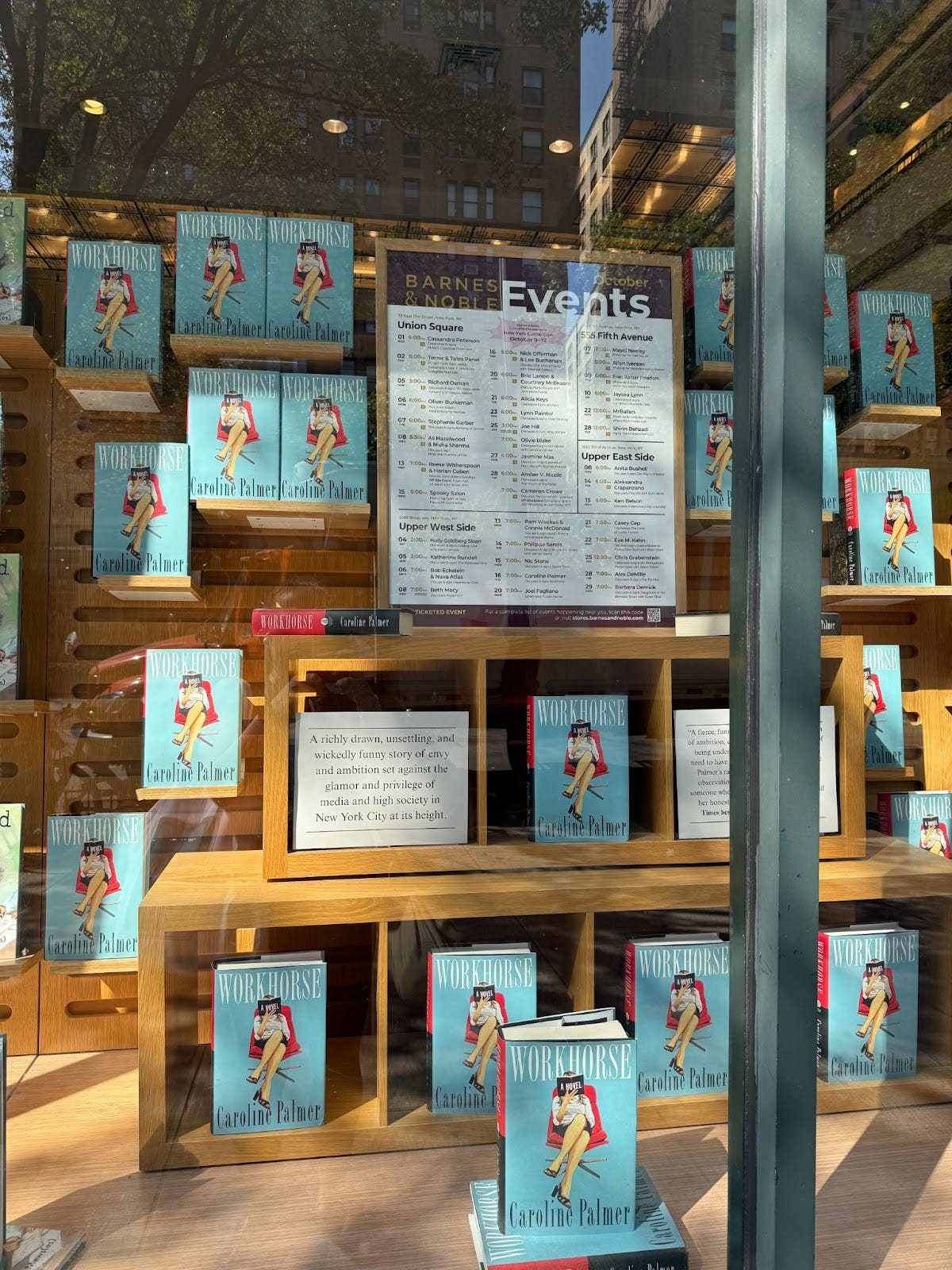
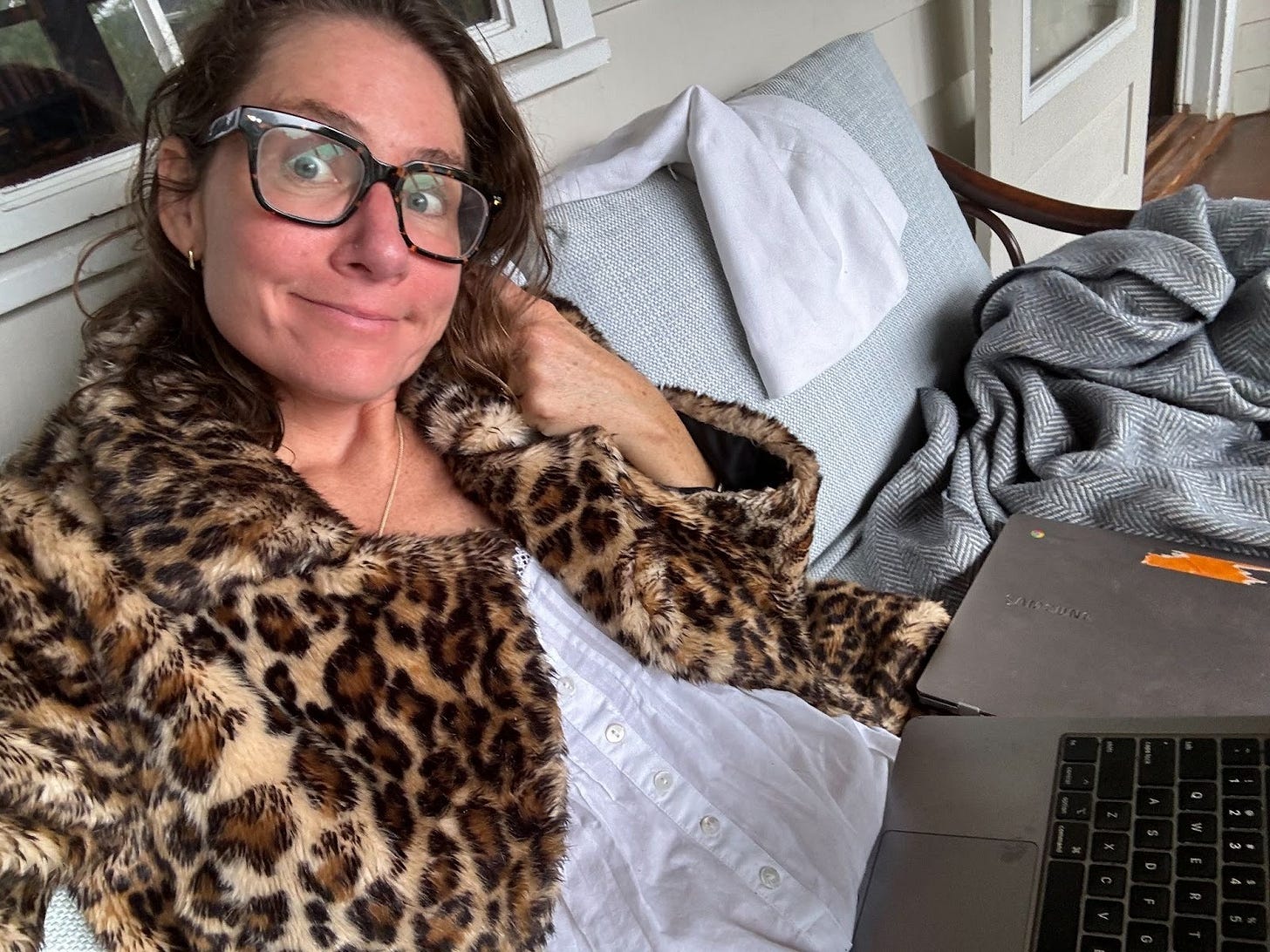
I had no time, I am in a rush.....but BY GAWD!
I
COULD
NOT
HELP
MYSELF.
I read every goddam word!
This has nothing to do with the book BUT that Clinique compact as signifier took me back...
I was at dinner with college friends during a school break, before going out to the bars, when I pulled out my Clinique lipstick to refresh. A 'friend' promptly asked "oh, is that from a GWP?" and I had no idea what she was talking about, as my mother had given me the lipstick. I learned that GWP lipsticks are in a plastic tube, real lipsticks are in a metal tube (silver for Clinique, gold for Lauder). Basically saying "oh, can't you afford to buy a lipstick?" We were all upper middle class sorority girls, so there was no reason for her say boo, she just felt like it.
I knew about clothing signifiers, we were all about Guess and Girbaud jeans (we called them Compliments) in those days, it was my first clue about cosmetics as signifiers.